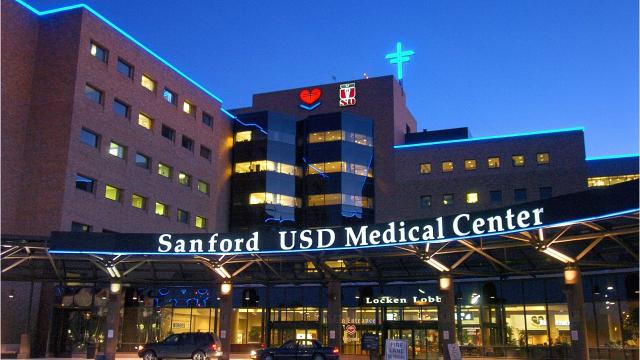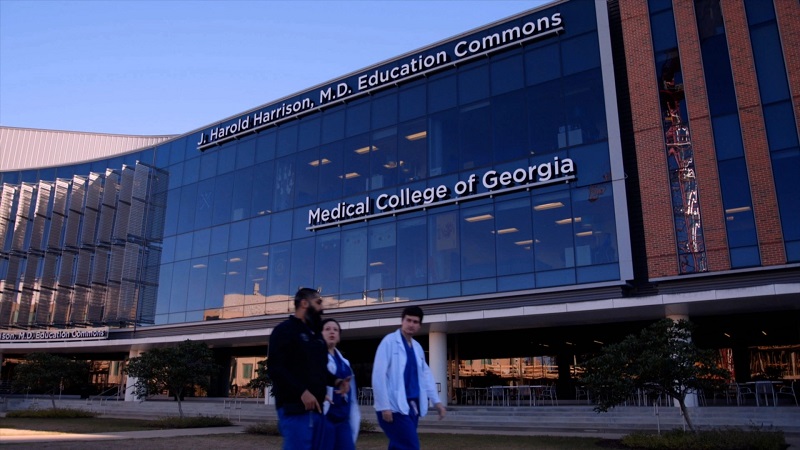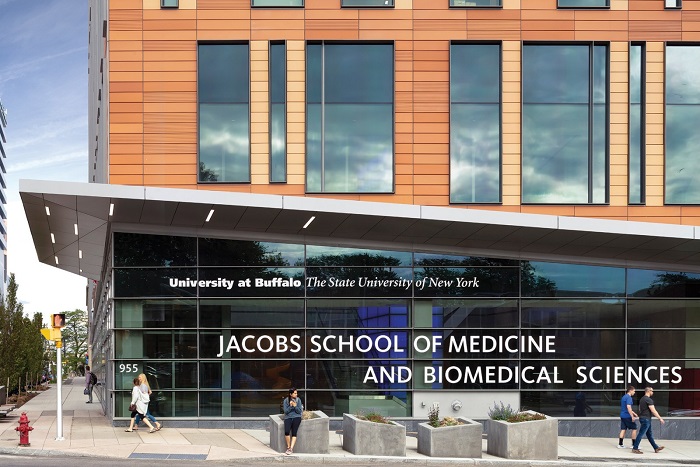Easiest Medical Schools to Get Into: Medical school is a prerequisite for you to become a medical doctor and practice anywhere in the world. Unfortunately, according to the Association of American Medical Colleges (AAMC), only about 36% of candidates are matriculated in medical school. Every year, many eligible applicants are turned down because there aren’t enough medical schools to match the demand for a medical degree. In order words, only about a third of medical students who graduate from university end up going to medical school to get licenced.
Another reason for the high level of competition in medical schools is that many students aspire to attend a prestigious medical school. Most students aim to earn a medical degree from a prestigious medical school. It can be less stressful if you can find the easiest medical school to get into through extensive research.
In this article, we will take a look at the top 10 easiest medical schools to get into in 2024. Check out this list to determine the best school for you, whether you’re still debating between a DO and MD or you’ve already decided which route you want to go down.
What is a Medical School?
A medical school is a tertiary educational institution, or part of one, that teaches medicine and grants physicians a professional degree. Bachelor of Medicine, Bachelor of Surgery (MBBS, MBChB, MBBCh, BMBS), Master of Medicine (MM, MMed), Doctor of Medicine (M.D.), or Doctor of Osteopathic Medicine are examples of such medical degrees (D.O.). Many medical schools also provide additional degrees such as a Doctor of Philosophy (PhD), a master’s degree (M.Sc.), or other post-secondary studies. Medical schools can conduct medical research and run teaching hospitals.
Every medical school’s mission comprises medical education, research, and patient care. All medical schools share the purpose of educating students in the art and science of medicine and preparing them to enter the period of a graduate medical study.
Medical schools provide students with early access to clinical medical experiences that help them handle real-world issues.
Admission Requirements for a Medical School
Pre-medical education in subjects like physics, chemistry, biology, psychology, and genetics is required of medical students. While attempting to complete their undergraduate degrees, students in several medical schools are required to enrol in some of these courses.
You must provide the appropriate documentation to be accepted into medical schools. Letters of recommendation, college transcripts, MCAT scores, a resume, and many other papers are examples of these. In some circumstances, you must meet the institution’s MCAT and GPA requirements before being admitted.
Sometimes competency-based tests are used as part of the admissions process for medical schools rather than specific courses. Some require a previous lab, volunteer, or shadowing work.
Many undergraduate students major in biological sciences to improve their prospects of admission to medical school. Medical schools, on the other hand, assess all applicants who complete the required prerequisites equally, irrespective of their major.
Letters of recommendation are typically required by medical school admissions committees. You should request letters of recommendation from your undergraduate instructors, pre-med advisors, or your school’s pre-med office. Select someone who can speak to your advantages.
How Long Does it take to Complete Medical School?
According to experts, medical school normally lasts four years and is equivalent to working full-time.
According to medical school professors and administrators, aspiring doctors should accept the amount of studying and training required to become licenced physicians before deciding whether medicine is suited for them. Experts argue that pursuing a medical degree is a significant commitment that should not be taken lightly and that it should be the start of a lifelong dedication to combating sickness and promoting well-being.
Medical school typically lasts four years, however, after receiving either an M.D. or a D.O. degree, most people move on to the next phase of their medical training, which is usually a residency in their selected speciality, such as surgery or radiology. A fellowship is usually required in addition to a residency programme for aspiring sub-specialists who want to focus on a specific niche of a medical speciality, such as someone who wants to develop expertise in treating a specific type of cancer rather than becoming a generalist oncologist who treats multiple types of cancer.
A medical student who goes on to finish a residency and fellowship may spend a decade or more training to become a physician.
Cost of Attending Medical School
Based on the various factors involved in it, such as practicals, research projects, the student’s residency status, horsemanship, etc., the medical course requires a significant financial commitment. To purchase the essential equipment for medical training, a variety of activities require financial support. While some medical schools charge higher tuition, others are more reasonably priced for students.
The costs for public and private medical schools vary. While private medical schools are run by people, public medical schools are supported by the government. You can be fortunate to locate the most affordable medical school with the easiest admission requirements. According to the Association of American Colleges, the average tuition for a public medical school in 2020 was $54,500 for out-of-state students and $32,380 for domestic students. However, we’ve got Cheapest Medical Schools in the USA for You.
Factors to Consider when choosing a Medical School
1. Make Medical Experience a Part of Your Resume
Increase your chances of admission to medical school by earning medical experience for your resume. Although not obligatory, medical experience demonstrates to admissions committees that you are keen to pursue a medical career.
2. Choose a Major in which you will excel
Prospective doctors are not required to major in biological sciences to get admitted to medical school. Medical school admissions committees advise that you pursue an undergraduate major that you enjoy and are capable of excelling in. The American Academy of Family Physicians advises that you take biology, mathematics, chemistry, and English courses regardless of your degree.
3. Take part in research projects
If you are interested in a career in medical research or academic medicine, undergraduate research experience is required. Experience in research can help you stand out from other applicants.
4. Study for the MCAT frequently and early
Although medical schools assess the full application package, MCAT scores are crucial. Plan a study programme after familiarising yourself with everything the MCAT test will cover. Many students use practice exams to keep track of their progress.
5. Volunteer in your community
Volunteering in your community exhibits character and integrity, both of which are key qualities for people pursuing professions in medicine. You might volunteer in medical environments to get experience.
6. Don’t Underestimate Extracurricular Activities
Applicants with extracurricular activities on their resumes are generally preferred by medical school admissions committees. Students that participate in multiple activities while keeping high GPAs display good time management and a strong work ethic.
7. Prepare to explain why you want to become a doctor
Students who have strong, compelling reasons for wanting to be doctors have a better probability of getting into medical school. Many programmes demand personal statements from applicants. Make an effort to craft a one-of-a-kind, honest essay that the admissions committee will remember.
8. Apply to Several Schools
Applying to multiple schools can improve your chances of admission. However, only apply to med schools where you meet the entrance requirements.
9. Prepare for interviews
Personal interviews are one of the requirements for admission to medical schools, while the particular procedures vary from school to school. You can get interviewed on or off campus. A member of the admissions committee, many members of the admissions committee, or off-campus interviewers like practising physicians and/or current students may conduct interviews. The interview evaluations are often included in the admissions file.
Top 10 Easiest Medical Schools to get into in 2024
Here we go with the easiest medical schools you can apply for 2024:
1. Mercer University School of Medicine
The first on our list of easiest Medical Schools to get into is The Mercer University School of Medicine offers degree programmes throughout Georgia, as well as a four-year M.D. degree in Macon and Savannah.
Students can also apply for an advanced Doctorate in Rural Health Sciences, a Master’s degree in family therapy, and other medical courses. While MUSM is easier to get into than other medical schools, the M.D. programme is only offered to Georgia residents.
The Southern Association of Colleges and Schools Commission on Colleges has accredited the school. With an acceptance rate of 10.4%, Mercer University School of Medicine accepts 604 students per year, with an average MCAT score of 503 and an undergrad GPA requirement of 3.68.
2. University of North Dakota School of Medicine
The UND School of Medicine & Health Sciences is headquartered in Grand Forks, ND, and offers a significant tuition discount to North Dakota and Minnesota residents.
They also offer the Indians into Medicine (INMED) programme, which is tailored exclusively to Native American students.
It is a four-year M.D. programme that admits 296 students annually. Accepts students with an average MCAT score of 507 and an undergraduate GPA of 3.8.
3. The Sanford School of Medicine

The University of South Dakota’s Sanford School of Medicine is the third on our list of easiest Medical Schools to get into. It provides M.D. programmes as well as associated biomedical degrees. Programs that offer biomedical degrees are among the most unusual offerings.
One of the most unique is the Frontier and Rural Medicine (FARM) programme, which places trainees in local clinics for an eight-month course to learn the fundamentals of rural medicine.
Non-residents must have a significant connection to the state, such as having relatives in the state, graduating from the same high school or college in the state, or belonging to a federally recognised tribe.
Sanford School of Medicine boasts of a 14% acceptance rate, charging Resident: $16,052.50 per semester; Non-Resident: $38,467.50 per semester; Minnesota Reciprocity: $17,618 per semester.
4. Medical College of Georgia

Augusta University’s Medical College of Georgia focuses on dual degrees. Students can earn their M.D. while also pursuing a master’s degree in management (MBA) or a master’s degree in public health (MPH).
The integrated MBA programme is meant to teach students managerial and clinical practices to equip them to operate in the United States healthcare system. The M.D./MPH programme emphasises community healthcare as well as public health.
The M.D. programme takes about four years to finish, whereas the combined programme takes five years.
The Medical College of Georgia has a 7.4% acceptance rate and charges Residents: $28,358 per year; Non-Residents: $56,716 per year.
5. The University of Arkansas for Medical Sciences
The UAMS College of Medicine, which has been in operation since 1879, offers M.D./Ph.D., M.D./MPH, and rural training programmes.
According to the website, it was one of the nation’s first institutions to instruct pupils using modern technology for deep brain stimulation.
Throughout their degree programme, students are allocated to one of the academic houses, which provides academic, social, and professional support.
UAMS has an acceptance rate of 7.19% and charges Resident: $33,010 per year; Non-Resident: $65,180 per year
6. University of Tennessee Health Science Center
The University of Tennessee Health Science Center in Memphis has received almost $80 million in research funding.
Students at medical school get access to cutting-edge technology. The Health Science Center is well-known throughout the state for its disease studies.
Furthermore, distance learners can have access to the school. SACSCOC has approved it.
University of Tennessee Health Science Center’s acceptance rate is 8.75% and charges In-State: $34,566 per year; Out-of-State: $60,489 per year in tuition.
7. Nebraska Medical Center
The origins of the university can be traced back to the 18th century. Since its inception in Omaha, Nebraska, the school of medicine has been dedicated to advancing health care across the country.
The institution has received international recognition for its commitment to health improvement through its involvement in the construction of the Lied Transplant Center, the Lauritzen Outpatient Center, and the Twin Towers research unit.
Nebraska Medical Center admits 9.8% every year and charges residents: $35,360 per year; Non-Resident: $48,000 per year.
8. Jacob School of Medicine and Biomedical Sciences

A course at the Jacob School of Medicine and Biomedical Sciences at the University at Buffalo encourages students to practise critical thinking and problem-solving skills. The school’s mission is to improve overall health at every stage of a New Yorker’s life while making a global impact.
Since its inception more than 150 years ago, the college has accepted approximately 140 medical students each year. In comparison to other colleges with similar admittance conditions, a medical school has a significant impact on the medical industry through the discovery of new technology and techniques.
The School of Medicine is well-known for its pioneering work in implantable heart pacemakers, newborn screening, therapies for delayed MS progression, and the first minimally invasive spine surgery.
Jacob School of Medicine and Biomedical Sciences has a 7% acceptance rate and charges Residents: $21,835 per semester; Non-Resident: $32,580 per semester for tuition.
9. Brody School of Medicine
East Carolina University’s Brody School of Medicine is located in Greenville, NC, and offers pathways to a PhD, M.D., dual degree M.D./MBA, and a master’s degree in public health. In addition, the M.D. programme offers four distinction track choices in which students can choose a topic of independent study and perform a capstone project. Pre-medical students might look into the school’s Summer Program for Future Doctors.
Brody School of Medicine admits 556 applicants every year.
10. College for Graduate Health Sciences
The College for Graduate Health Sciences at the University of Tennessee Health Science Center has eleven master’s and doctoral programmes ranging from nursing science to health outcomes and policy research. The application process is fully online, and there is no application fee. International students are welcome to apply, however verification of English ability and validated educational credentials may be requested.
enrols 693 per annum and charhes In-State: $34,566 per year; Out-of-State: $60,489 per year
Advantages of Medical School
The possibility of high earnings is just one of many benefits of medical school. The average annual salary for doctors and surgeons is $208,000, according to the U.S. Bureau of Labor Statistics. Medical experts will continue to be in demand as the globe’s population ages, and in many regions of the world, a medical degree can pave the way for a lucrative, long-term career.
Additionally, doctors are not required to practise in a hospital or clinic. Some medical students opt to pursue careers in education or research, or they strive to advance the American healthcare system after earning a master’s in public health. Numerous routes to a secure and fulfilling profession are open to many students with a medical degree.
Disadvantages of Medical School
Not everyone should attend medical school, even though it can be a smart move to pursue a career in medicine. Even institutions that are simple to get into also expect their students to put forth a lot of effort. Earning an M.D. entails four or more years of education, a residency in medicine, and possibly moving to a hospital or clinic far from home.
Besides that, even for in-state students, medical school is not inexpensive. Although a healthcare career can be lucrative, it won’t start until long after you graduate, and you might not have the time to work a second job while you complete your degree. After taxes, the typical wage for medical residencies ranges from $42,000 to $48,000 per year, which is significantly less than a doctor’s salary.
These aspects can be quite stressful for medical students and their families, particularly if they have student loan debt. Before choosing whether or not a medical school is suitable for you, it’s crucial to weigh the cost and time commitment. The average student loan debt for medical school is more than $200,000.
Conclusion
Being a doctor is a very lucrative and well-paying job. Nevertheless, medical schools have a reputation for being competitive, only accepting less than 40% of applicants. To assist you in choosing the greatest school for you, I’ve examined the most esteemed colleges and universities that grant medical degrees and have compiled this list of the best medical schools with the simplest admissions standards.
There is a possibility that the United States may have a physician shortage in the next ten years due to the increasing demand for the medical profession. The number of classes must be kept to a minimum in medical schools, however, to ensure that all students receive the necessary instruction.
The pursuit of a medical degree is ultimately a major commitment. You normally need a bachelor’s degree, a strong GPA, and strong results on the Medical College Admission Test (MCAT). You could assume that a career in medicine is out of the question if you are unable to achieve these standards. This isn’t the case, though, and you might be able to attend one of these easiest medical schools to get into.

